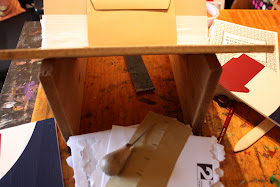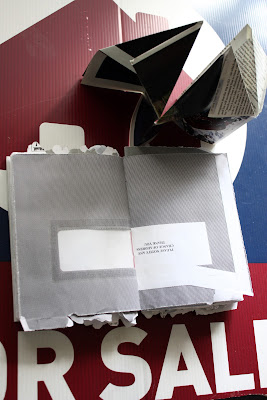This was just a whim and a distraction, an enjoyable one. I have made a book with old envelopes before, where it is I do not know; perhaps I gave it away, who knows?
The trigger for this little book came from the work of an Australian book artist Adele Outteridge. There is a good video of her talking about her books made of recycled materials on You Tube.
I made the covers from an old For Sale board and that idea came from the tutor on my medieval book binding course.
Ever since then I have been looking out for old boards, imagine my frenzied excitement when I saw one at the recycling centre near our local library. It was a pity that it was attached to a large post with huge rivets. Would that stop me, no way. I went into the library and asked to borrow scissors, and then set about detaching all of the board that I could manage. They probably thought I was crazy and perhaps they were right! The first job was to get out the baby wipes and give the board a good clean.
Do something interesting with your envelopes and I will link to your work here.
Lin Artiblobs, see her work here.























